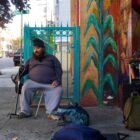Normal
0
21
MicrosoftInternetExplorer4
st1:*{behavior:url(#ieooui) }
/* Style Definitions */
table.MsoNormalTable
{mso-style-name:”Table Normal”;
mso-tstyle-rowband-size:0;
mso-tstyle-colband-size:0;
mso-style-noshow:yes;
mso-style-parent:””;
mso-padding-alt:0in 5.4pt 0in 5.4pt;
mso-para-margin:0in;
mso-para-margin-bottom:.0001pt;
mso-pagination:widow-orphan;
font-size:10.0pt;
font-family:”Times New Roman”;
mso-fareast-font-family:”Times New Roman”;}
The average homeless person in San Francisco is male, has lived in the city for at least 10 years, was formerly a renter and is currently faced without housing for the first time, according to a new city-sponsored survey of homeless shelter residents.
The San Francisco Human Services Agency released their findings last week following surveys conducted with 1,024 people at emergency shelters, transitional housing facilities and other sites throughout the city.
It was part of a biannual study of San Francisco’s homeless population, which is required by the U.S. Housing and Urban Development Department in order to authorize funding. The city typically receives $18 million in McKinney-Vento Homeless Assistance Act funding, the primary federal legislation dealing with homeless shelter programs in the U.S.
“The purpose of the survey is to better profile the subpopulations in the homeless universe,” said Peter Connery, vice president of Applied Survey Research, a Watsonville-based firm hired by the Human Services Agency.
A mostly volunteer force counted the street population on a single night in January, while a team trained by the polling group and the Human Services Agency administered the actual survey.
The survey team noted a significant fall in the shelter population — down to 3,349, from 3,805 two years ago. In the report, the Human Services Agency suggested that the elimination of one shelter and two drop-in centers — including the 150 Otis St. resource center, which doubled as a part-time shelter before its closure in June of last year — contributed to the reduction.
Bob Offer-Westort, a civil rights organizer for the Coalition on Homelessness, doesn’t see this as a coincidence.
“A huge part of the reason is the loss of shelter beds,” Offer-Westort said. “The closure of 150 Otis alone is precisely equal to the entire decrease in the count.”
While the survey’s street count hinged on volunteers’ observations from a distance, shelter residents also filled out survey forms detailing demographic information as well, including questions about race, age, prior residency and veteran status.
The data show that nearly three-quarters, or 73 percent, of the homeless people currently in shelters were living in San Francisco at the time when they became homeless — a number that hasn’t changed much since 2009.
More than half of the respondents, or 55 percent, were between the ages of 31 and 50, also comparable to figures in 2009. But the number of people aged 50 or more nearly doubled, from 146 in 2009 to 290 this year.
The number of newly homeless people also increased from the last survey, as 53 percent said this was their first homeless experience, versus 45 percent who said the same in 2009. In both years, about 25 percent of sheltered homeless attributed their current episode to unemployment.
The leading living arrangement prior to homelessness was renting, with 26 percent formerly living in an apartment or rented home. The next common living arrangement was with relatives, at 17 percent, and friends at 14 percent.
The survey also revealed that unaffordable rents were the most common barrier to people’s ability to find permanent housing in the city. Fifty-two percent said they couldn’t afford to rent. Another 31 percent said lack of income or employment prevented them establishing any kind of residence.
While the sample size for the survey almost doubled from 532 two years ago, Chris Bettinger, an associate professor of sociology at San Francisco State University, said the larger pool won’t change the basic data.
“The only effect of the increased sample size would be to lower the margin of error of population estimates from 7 percent to 3 percent,” he said.










